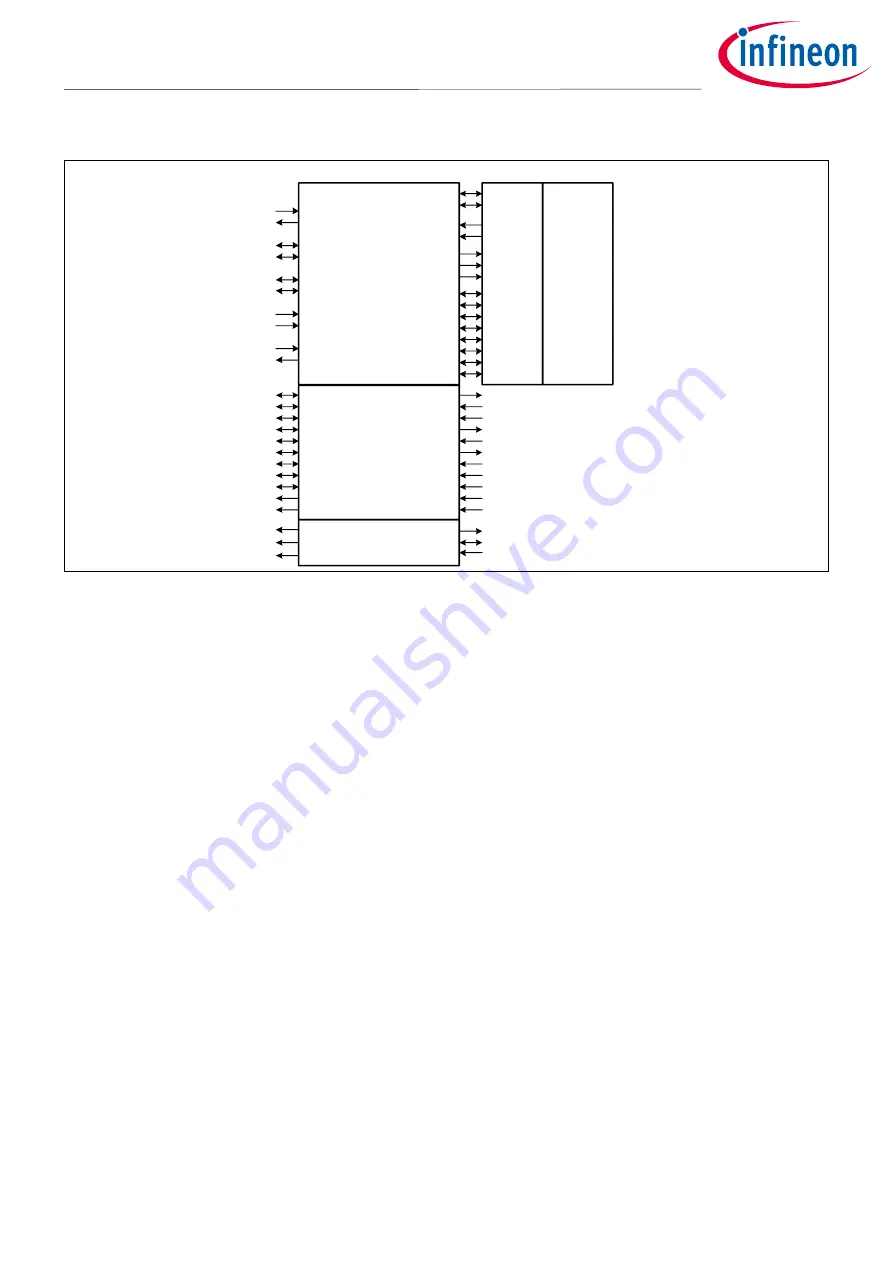
Application Note
9 of 42
001-65209 Rev.*I
2021-03-19
Getting Started with FX2LP™
FX2LP Introduction
PC[7:0]/GPIFADR[7:0]
PE7/GPIFADR8
PE6/T2EX
PE5/INT6
PE4/RxD1OUT
PE3/RxD0OUT
PE2/T2OUT
PE1/T1OUT
PE0/T0OUT
CTL[5:3]
RDY[5:2]
TxD1
RxD0
TxD0
RxD1
T1
INT4
INT5#
T2
WR#
T0
RD#
EA
CS#
OE#
PSEN#
A[15:0]
D[7:0]
100
128
PD[7:0]
PB[7:0]
RDY0
RDY1
CTL0
CTL1
CTL2
XTALIN
XTALOUT
DPLUS
DMINUS
SCL
SDA
RESET#
WAKEUP#
XCLK
CLKOUT
INT0#/PA0
PA1/DA0
PA2
WU2/PA3
PA4
PA5
PA6
PA7
56
IORDY
DMARQ
IOW
IOR
DMACK
←INTRQ
→DA0
→DA1
→DA2
→CS0
→CS1
→DASP
→RESET
FIFO Data
GPIF
SLRD
SLWR
PRGFLAG
INFULL
OUTEMPTY
←INT0
←INT1
←SLOE
PA3
←FIFOADR0
←FIFOADR1
←PKTEND
PA7
FIFO Data
Slave FIFO
Single Chip
Figure 5
Three FX2LP Package Choices
The 56-pin package is the lowest-cost version of FX2LP. The signals on the left edge of the 56-pin block (in
are common to all package versions in the family. Three modes are available in all package versions:
single-chip, GPIF, and Slave FIFO. These modes define the signals shown on the right edge of the 56-pin block
(in
). The 8051 selects the interface mode using an internal register. Single-chip mode is the power-on
default configuration.
The 100-pin package adds functionality to the 56-pin package by adding 44 pins:
•
Two additional 8-bit I/O ports, PORTC and PORTE.
•
Seven additional GPIF controls (CTL) and ready (RDY) signals.
•
Nine non-multiplexed control signals (two UARTs, three timer inputs, INT4, and INT5#).
•
Eight additional control signals multiplexed on to PORTE.
•
Nine GPIF address lines, multiplexed on to PORTC(8) and PORTE(1),
•
RD# and WR# signals, which may be used as read and write strobes for PORTC.
The 128-pin package adds 8051 address and data buses and their control signals. These added pins allow
FX2LP to operate with an external 8051 memory. This package is used in the FX2LP Development Board.









































